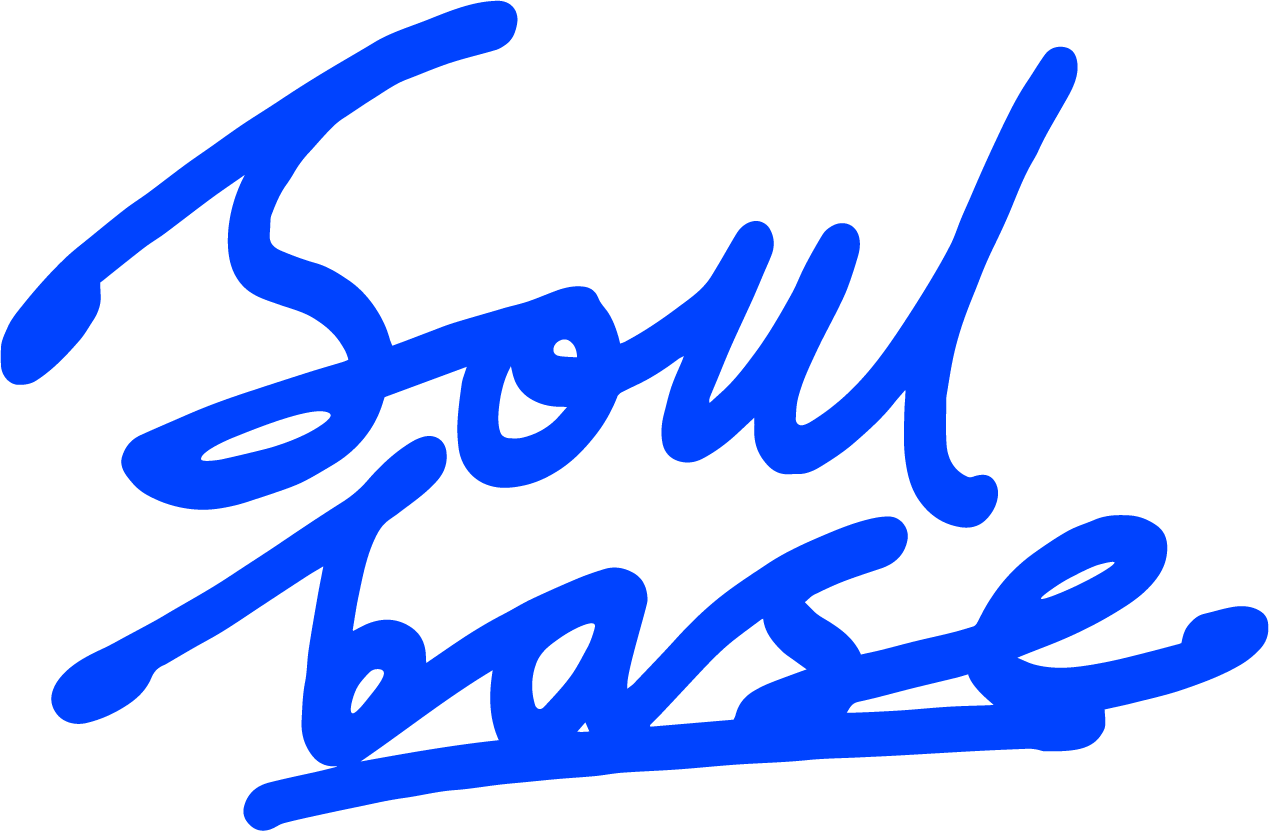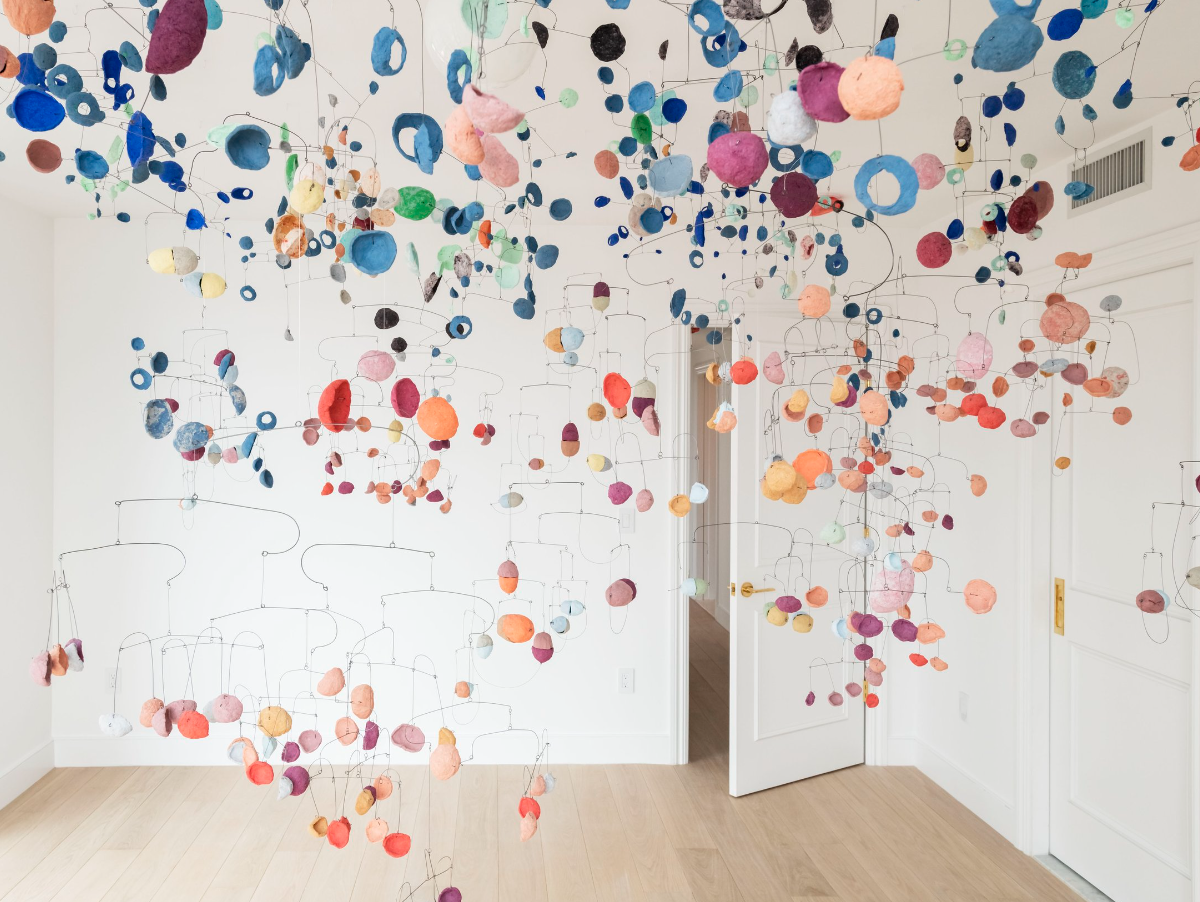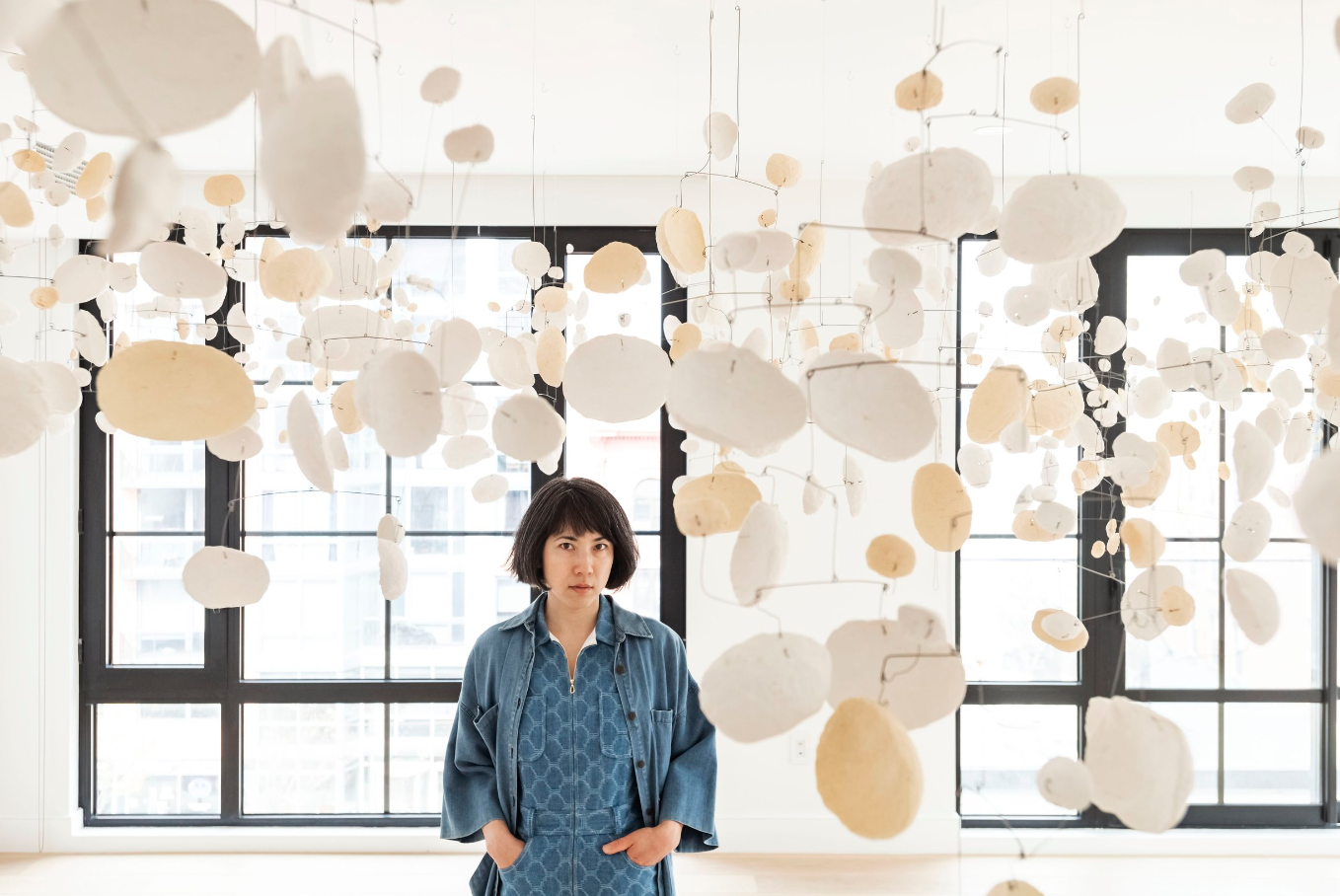Soulbase Talk: Yuko Nishikawa
Perfection only exists in concepts
Yuko Nishikawa is a Brooklyn-based, Japanese lighting designer and ceramicist. Yuko needs to touch things to feel their weight and texture. She believes that perfection exists only in the form of concepts, and through her work, she wants you to feel “piku-piku,” a small unintentional movement. And if you go to see her exhibitions, no one will say to you, “please don’t touch!”
Text by Andrea Juckem Imagery by Matthew Williams & Yuko Nishikawa
You come from Japan, where you lived for your first 18 years. Why did you decide to come to NYC? And do you like creating there?
I just really wanted to leave my hometown. I simply wanted to be in a new environment. I grew up in a very small beach town where everyone knew everyone. My hometown is only one hour from Tokyo, so staying would mean daily commuting, and that wasn’t far enough for me. New York sounded like a cool place to be. Back then, I did not have any detailed knowledge about the city. There was not much thought behind my decision. But after all this time, I still like being here.
You design tableware and lighting and create sculptures and furniture. What connects it all is that you work mainly with clay. Why this material?
Yes, you can say that my main material is clay, but I also work with paper pulp, which is air dried clay that I formulate. I like to interact with these two materials that behave similarly in many ways. I can form them with my hands, and I like that it’s a wet process. What’s also very important to me is touching. Before working with ceramic, I was experimenting with other materials. For instance, glass blowing was epic, but because it was too hot, I could not touch it. Therefore, it was not satisfying for me. I also enjoy that, with these materials, I can create instantly without much planning.
You mentioned that touching is important to you. Do you think people still create enough with their hands or are we losing this skill?
I feel very sad about people not using their hands enough. I personally miss buttons. I want to press buttons. Everything is so flat, starting with our phones. But that’s how designing is these days – without interaction with depth and piloting. I always think about texture and movement. We cannot lose this skill and the experiences that come with it. It would be very sad.I want to make work where there is movement, where you can walk around it, see it and experience it. Of course, I take pictures of my work, but at my exhibitions, I want people to have other experiences as well. I want them to come out and touch stuff.Wait a moment… are you saying that when I come to one of your exhibitions, I can really touch your pieces? We usually hear not to touch anything at art exhibits.
Yes, of course! I don’t like this “no touch” policy. I used to work for a design company designing lighting pieces and furniture, and I would go to trade shows and furniture fairs and it was like “don’t touch anything.” I was really bad at that — I couldn’t resist. I was touching things without even thinking, and people were like “please don’t.”We need to use our body to feel the weight and texture. Or even to break stuff because that’s how we remember things and learn. I think it’s beyond our logic the way our body interacts with objects.You worked for almost a decade for a big furniture company. What made you want to start working and creating on your own? How was the transition?
I was getting bored. When I started working for them, furniture design was new to me. At the beginning it was very interesting. I visited first-class manufacturers, master glass blowers in Merano and art metal producers, and I was working on different prototypes. It was a very clean, luxurious, polished metal and “don’t touch” kind of design environment. After some time, it didn’t feel right anymore, so without any planning, I slowly started to work with clay — getting initial projects from Calvin Klein home and gradually creating my own artwork. I think that there was a point when people knew that I was not coming back.
Through your work you want to make people feel piku-piku. What is it exactly that you want people to feel?
In Japanese, we have many onomatopoeia words that are associated with sounds. Piku-piku is a small movement. It just happens as an action to something. You are not intently making the move, but you cannot help it. Something is tickling you deep inside.Your designs are very playful and joyful. What is the most important thing for you when it comes to design?
I think my recent work has lots of colors and playfulness. I think if something is not joyful, I don’t need to talk about it. I don’t want to be reminded of not joyful things. We give too much attention to such things. I want to remind myself the good part about living. The most important thing to me is moving forward. I am constantly moving to a place, where I want to go, even though I might not know exactly where it is, because it kind of evolves for me. Every single piece that you create is differently shaped and one of a kind. What does imperfection mean to you?
If you are looking for perfection, you are looking for something that only exists in concepts, and that does not interest me. But there are many people who are searching for it. I feel like we have that already taken care of by others, so I can do my own stuff. When I create and make forms, I think a lot about our body muscles. This gives my work a more organic form. Why do you like to create lamps and work with light in general?
I like working with light because it adds another sculptural element. It’s magical and transforms the space. I guess I am attracted to light like bugs. I also like that there is some interaction with lamps. You have to turn it on and off. There is that button to press I was talking about. If it’s a sculpture, you might just have it on a shelf and not touch it for a year, but if it’s a lamp, you have to interact with it.How do you come up with new ideas? What inspires you?
Ideas come easy. For me, it’s more about making the decision about which one to pursue, simply because there are just so many of them. I don’t see inspiration as something that I have to seek somewhere. It’s about what is possible now with this unique moment, unique place and unique people. It’s weirdly practical for me. Recently you collaborated with the fashion brand Sandro, designing their store windows all over the world. How did that come together?
Funny enough, they saw and liked my 100 paintings. The paintings I made were very lively – full of dots of greens and pinks. For Sandro’s store windows, I proposed an idea of hanging sculptures. The mobiles I created at the end were like these three-dimensional paintings that started it all. But I didn’t want to use ceramic because it’s too heavy and breaks easily. Not great for shipping either! So, I started to experiment with paper outside of the canvas and came up with paper pulp. It allowed me to have more elements hanging from one single spot. I also wanted to incorporate movement, celebration and joy of living.
Where else can we see your work and touch it?
My paper pulp mobile installation in a beautiful Onna House in East Hampton, New York is a great place to start. It’s this beautiful modernist home, where pieces by many talented female artists and designers are displayed. And, if you are on the other coast, the atrium at Heron Arts in San Francisco will host my paper pulp mobiles in July.Thanks so much Yuko Nishikawa for this amazing insights on your work.Please follow Yuko Nishikawa on her social channels and on her website :Can you tell me more about your “salon at forest meetings” for creative people? Why did you start these gatherings and why is it important for creatives to meet?
The story behind this idea goes way back to my first interview for a magazine. I was asked questions about my work that I did not know how to answer. I had a really hard time explaining my work. Therefore, I wanted to have a place where I could practice talking about my work. At the beginning, it was mainly friends, but the meetings gradually expanded so that everyone was welcome. I like to bring people together from different fields. It’s interesting when a dancer talks about her project and so does a neuroscientist. There is an overlap between them.However, we have not renewed these meetings since the pandemic, but we are talking and thinking about starting again.During the pandemic you painted 100 pictures — one a day for 100 days. What motivated you to start such a project and what kept you going for the 100 days?
This was a really spontaneous decision. I just finished a project. I went home and I was like, “What will I do?” Painting was one of the things I could easily do in quarantine. It provided a good rhythm to my days. I knew I had to finish before the sun went down to have time to take a picture. It gave me a sense of completion.





